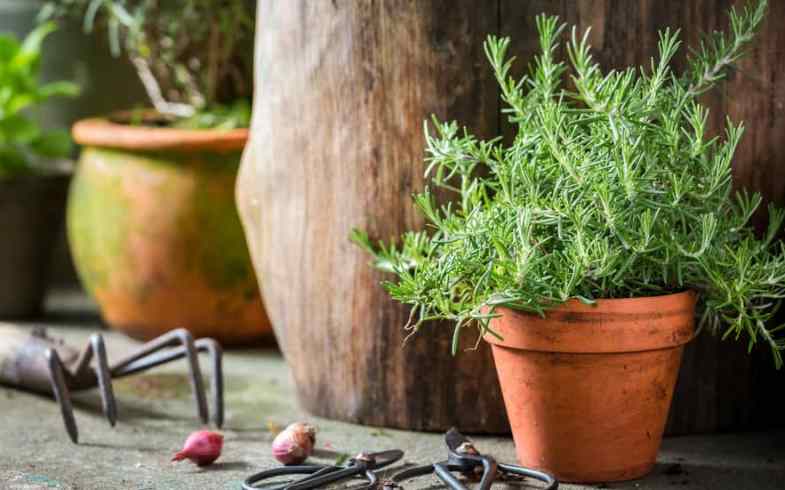Growing Rosemary & Thyme: A Comprehensive Guide For Beginners

Table of Contents
Choosing the Right Rosemary & Thyme Plants
Selecting the right variety is crucial for successful growing rosemary and thyme. Different varieties offer unique flavors, growth habits, and hardiness levels.
Selecting Your Rosemary Variety
Rosemary ( Salvia rosmarinus) boasts a variety of cultivars, each with its own charm. Consider the following factors when choosing your rosemary:
- Space: Do you have ample garden space, or will you be growing rosemary in a pot? Upright varieties like 'Arp' rosemary are suitable for larger gardens, while prostrate varieties like 'Prostratus' rosemary are perfect for containers or as ground cover.
- Climate: Some varieties are more cold-hardy than others. For colder climates, consider hardy varieties like 'Miss Jessopp's Upright'.
Popular Rosemary Varieties:
- Tuscan Blue Rosemary: Known for its intense flavor and beautiful blue-green foliage. Excellent for culinary use.
- Miss Jessopp's Upright Rosemary: A vigorous, upright variety with a strong rosemary scent. Highly cold-hardy.
- Prostratus Rosemary: A low-growing, spreading variety ideal for containers or as ground cover.
Choosing Your Thyme Variety
Thyme (Thymus vulgaris) offers a diverse range of flavors and growth habits. Consider both culinary and ornamental uses when selecting your thyme:
- Flavor Profile: Do you prefer the classic taste of English thyme, the citrusy notes of lemon thyme, or the subtle sweetness of caraway thyme?
- Growth Habit: Creeping thymes, like Mother of Thyme, are excellent ground covers, while upright varieties are better suited for containers or borders.
Popular Thyme Varieties:
- English Thyme: The classic thyme with a strong, slightly lemony flavor. A staple in many kitchens.
- Lemon Thyme: Offers a bright citrusy flavor, great for teas and poultry dishes.
- Creeping Thyme: A low-growing, spreading variety perfect for rock gardens or pathways.
Planting Your Rosemary & Thyme
Proper planting ensures healthy growth and a bountiful harvest.
Optimal Growing Conditions
Both rosemary and thyme thrive in sunny locations with well-draining soil.
- Sunlight: At least 6-8 hours of direct sunlight per day is ideal.
- Soil: Well-draining soil is essential to prevent root rot. A sandy loam or a mix of garden soil and compost works well.
- pH: Slightly alkaline soil (pH 6.0-7.5) is preferred.
Planting Instructions (Seeds vs. Starter Plants)
You can grow rosemary and thyme from seeds or use pre-grown plants.
Starting from Seed:
- Sow seeds indoors 6-8 weeks before the last expected frost.
- Use a seed-starting mix and sow seeds about ¼ inch deep.
- Maintain a warm temperature (65-70°F) and keep the soil moist.
Transplanting Starter Plants:
- Choose healthy, established plants from a reputable nursery.
- Dig a hole twice as wide as the root ball.
- Gently remove the plant from its container and place it in the hole.
- Backfill with soil and water thoroughly.
Caring for Your Rosemary & Thyme
Consistent care will ensure your rosemary and thyme plants thrive.
Watering and Fertilizing
- Watering: Water deeply but infrequently, allowing the soil to dry slightly between waterings. Overwatering is a common problem.
- Fertilizing: Rosemary and thyme are relatively low feeders. A light application of balanced organic fertilizer in spring is sufficient.
Pruning and Maintenance
Regular pruning encourages bushier growth and prevents legginess.
- Pruning: Prune after flowering to maintain shape and encourage new growth. Remove any dead or damaged stems.
- Deadheading: Regularly remove spent flowers to prevent the plant from putting energy into seed production.
Pest and Disease Control
Rosemary and thyme are generally pest-resistant, but occasional problems can occur.
- Common Pests: Spider mites and aphids.
- Common Diseases: Root rot (due to poor drainage).
- Organic Control: Use insecticidal soap or neem oil for pests. Ensure good drainage to prevent root rot.
Harvesting and Using Your Rosemary & Thyme
Harvesting at the right time maximizes flavor and yield.
Harvesting Techniques
- Best Time: Harvest rosemary and thyme before flowering for the best flavor.
- How to Harvest: Snip stems using sharp scissors or shears. You can also remove whole sprigs.
Preserving Your Harvest
Preserve your harvest to enjoy fresh flavors year-round.
- Drying: Hang sprigs upside down in a cool, dark, and well-ventilated area.
- Freezing: Chop fresh herbs and freeze them in ice cube trays with water or olive oil.
Conclusion
Growing rosemary and thyme successfully is a rewarding experience, providing you with fresh herbs for cooking and a delightful fragrance in your garden. By following these simple steps outlined in this comprehensive guide on growing rosemary and thyme, you can enjoy a bountiful harvest year after year. Start your journey today and experience the joy of homegrown herbs! Don't hesitate to start your own rosemary and thyme garden – you'll be amazed at how easy it is to grow these flavorful culinary treasures.

Featured Posts
-
 Analyse De L Impact Des Ouvrages Castors Sur Deux Cours D Eau De La Drome
May 31, 2025
Analyse De L Impact Des Ouvrages Castors Sur Deux Cours D Eau De La Drome
May 31, 2025 -
 Kontuziyata Na Grigor Dimitrov Vliyanie Vrkhu Klasiraneto Mu
May 31, 2025
Kontuziyata Na Grigor Dimitrov Vliyanie Vrkhu Klasiraneto Mu
May 31, 2025 -
 Miley Cyrus Wydala Flowers Szczegoly Nowego Singla I Albumu
May 31, 2025
Miley Cyrus Wydala Flowers Szczegoly Nowego Singla I Albumu
May 31, 2025 -
 New Padel Courts Planned For Chafford Hundred Health Club Following Dragons Den Investment
May 31, 2025
New Padel Courts Planned For Chafford Hundred Health Club Following Dragons Den Investment
May 31, 2025 -
 French Far Left And The Islamophobia Debate The Case Of The Slain Muslim Man
May 31, 2025
French Far Left And The Islamophobia Debate The Case Of The Slain Muslim Man
May 31, 2025
